Corpsmen, Marines Save Lives
Corpsmen, Marines
Save Lives
in Western Al Anbar
Photo by: Cpl Luke Blom
 A team of Marines provide security while on a patrol through Haditha, Jan. 17, 2007, as Sgt. Jason Tarr, infantryman and 27-year-old from Great Mills, Md., hands out candy to some Iraqi children.
A team of Marines provide security while on a patrol through Haditha, Jan. 17, 2007, as Sgt. Jason Tarr, infantryman and 27-year-old from Great Mills, Md., hands out candy to some Iraqi children. Photo by: Cpl Luke Blom

Lance Cpl. Michael Barger, infantryman and 22-year-old from Fredericksburg, Penn., teaches an Iraqi kid what a “high-five” is while on patrol through the streets of Haditha, Jan. 17, 2007.
Photo by: Cpl Luke Blom

Petty Officer 3rd Class Philip Oppliger, corpsman and 22-yaer-old from Bend, Oregon, treated the wounds of a Marine who was injured in an improvised explosive device blast, Jan. 18, 2007. Oppliger and the corpsmen of the Hawaii-based 2nd Battalion, 3rd Marine Regiment are credited with saving the lives of dozens of Marines and Sailors since they arrived in Haditha four months ago.

Lance Cpl. Michael Barger, infantryman and 22-year-old from Fredericksburg, Penn., teaches an Iraqi kid what a “high-five” is while on patrol through the streets of Haditha, Jan. 17, 2007.
Photo by: Cpl Luke Blom

Petty Officer 3rd Class Philip Oppliger, corpsman and 22-yaer-old from Bend, Oregon, treated the wounds of a Marine who was injured in an improvised explosive device blast, Jan. 18, 2007. Oppliger and the corpsmen of the Hawaii-based 2nd Battalion, 3rd Marine Regiment are credited with saving the lives of dozens of Marines and Sailors since they arrived in Haditha four months ago.
Photo by: Cpl Luke Blom
 Petty Officer 3rd Class Patrick W. Horgan, independent duty corpsman and 36-year-old from Aurora, Colo., heads up the company level Battalion Aid Station (BAS) in Haditha. The 2nd Battalion corpsmen are equipped to handle a myriad of combat injuries at the BAS.
Petty Officer 3rd Class Patrick W. Horgan, independent duty corpsman and 36-year-old from Aurora, Colo., heads up the company level Battalion Aid Station (BAS) in Haditha. The 2nd Battalion corpsmen are equipped to handle a myriad of combat injuries at the BAS.
 Petty Officer 3rd Class Patrick W. Horgan, independent duty corpsman and 36-year-old from Aurora, Colo., heads up the company level Battalion Aid Station (BAS) in Haditha. The 2nd Battalion corpsmen are equipped to handle a myriad of combat injuries at the BAS.
Petty Officer 3rd Class Patrick W. Horgan, independent duty corpsman and 36-year-old from Aurora, Colo., heads up the company level Battalion Aid Station (BAS) in Haditha. The 2nd Battalion corpsmen are equipped to handle a myriad of combat injuries at the BAS. Photo by: Cpl Luke Blom
By Cpl Luke Blom, 2nd Marine Division
HADITHA, Iraq (Feb. 2, 2007) -- When Sgt. Nathaniel Tatum heard a loud “Boom” while on a security patrol through the windswept streets of this Euphrates River city, he didn’t think about how to react to the improvised explosive device (IED) blast – he simply “let the training take over.”
After two Marines were wounded in an IED blast, Jan. 18, 2007, Tatum and fellow Marines along with the squad corpsman, who the Marines call “Doc”, provided immediate medical attention to the injured Marines who would have been in “bad shape” without immediate attention, according to HM1(FMF/CAC) Patrick W. Horgan, independent duty corpsman with the Hawaii-based 2nd Battalion, 3rd Marine Regiment.
While providing life-saving medical attention is business-as-usual for U.S. Navy corpsmen, the medical experience for the average U.S. Marine is often limited to the basic first-aid courses received in recruit training. However, Tatum and a group of approximately 100 Marines from the Battalion attended a Combat Lifesaver Course (CLC) while training in California, June, 2006.
In the CLC, corpsmen teach the Marines how to handle a casualty until a corpsman or medical officer is able to tend to the wounded. Throughout the course, Marines were taught how to apply a tourniquet, treat various wounds, administer an IV, recognize and treat shock, control blood loss and the anatomy of ballistic injuries.
“This [Combat Lifesaver Course] is probably some of the most important training a Marine can receive before deploying to a combat zone,” said HM3 Philip Oppliger, corpsman with Echo Company 2nd Battalion. “Ideally a corpsman is always going to be there when someone goes down, but that’s not always possible.”
Each squad of 10 to 14 Marines employs a corpsman, but when the squad has multiple casualties the Marines often give each other initial medical care, according to Tatum.
When Tatum saw two Marines injured after an IED detonated, he knew the corpsman needed help treating the wounded Marines, he said.
Within seconds of the blast, Tatum was applying a tourniquet and assessing the wounds of one of the wounded. By the time the squad corpsman was able to reach the wounded Marine, Tatum had already checked the Marine’s vital signs and applied a tourniquet to the Marine’s leg and stopped the bleeding.
“All I saw was a Marine in my squad, my friend, laying on the ground,” said Tatum, who received a concussion in the blast. “The first thought I had wasn’t if he was OK or not, it was to get a tourniquet on him and stop the bleeding. There wasn’t really time to think, the training just took over.”
While the corpsman continued to treat the wounded Marine, Tatum ran over to the other wounded Marine who was being treated by a fellow Marine.“I was a little dazed after the blast, but when I saw (the wounded Marine), I ran over to him and applied a tourniquet on his leg as fast as I could,” said Lance Cpl. William R. Hussey, infantryman and 19-year-old from Baltimore.
While both Marines sustained significant injuries, the immediate medical treatment from fellow Marines and the corpsman likely saved their lives, according to Horgan, a 36-year-old from Aurora, Colo.
“The treatment these Marines received at the scene in the few minutes following the blast was crucial,” said Horgan. “When we (corpsmen) can rely on Marines to provide effective medical treatment when a corpsman is unavailable it makes our job easier, but more importantly it increases the survivability of the Marines.”
When a Marine or Sailor is wounded in combat, a chain of events is set in motion designed to get the wounded service member as stable as possible while getting him to a medical facility where he can be thoroughly treated as fast as possible. This window of time is seldom more than 10 minutes.
“Usually we only have five to seven minutes to work on him before he gets CasEvac’d (Casualty Evacuation - put on a helicopter bound for the nearest medical facility),” said Horgan. “Sometimes it can get kind of chaotic.”
The list of treatments performed by corpsmen in their five to seven minute window is staggering; stop the bleeding, clear the airway and regulate breathing, apply IV’s, assess multiple wounds, apply bandages and splints and provide medication among numerous other tasks.
With so many things to accomplish in such a short period of time, someone who’s never seen a corpsman in action might assume this process would be hectic. To the contrary, the “Docs” are trained to keep their cool under pressure.
“When things go down, you’ve got to pause and take a breath and quickly evaluate the situation,” said Oppliger, a 22-yaer-old from Bend, Oregon. “You say to yourself, ‘OK, we’re taking fire from this direction, I’ve got my bag (medical supplies) and there’s the patient.’ Then you start running.”
“Keeping cool” is one of the most important tools in the corpsman’s bag for a couple reasons, according to Horgan. “If you’re calm and collected about the situation, it creates a calmer environment,” said Horgan. “You’re able to provide better care when you’re calm and everything just runs a lot smoother, which ultimately increases the survivability of the patient.”
The other reason according to Horgan is that “keeping cool” is contagious. The other Marines and onlookers see their calm and collected reaction and it instills confidence that everything that can be done is being done.
While the corpsmen are trained in medical procedures from the time they enter the U.S. Navy, they “feel safer” knowing if they should become a casualty, Marines like Tatum who have gone through the CLC are on hand to provide medical care, according to Oppliger.
“Making sure the Marines know some combat medical stuff is our way of saving our own lives,” said Oppliger.
**************************
My Notes on this post:
All of the Corpsmen (Medics) with the Marine Corps are members of the Navy.
Petty Officer 3rd class Philip Oppliger is from our hometown.
A huge thank you to the Medics in all branches of the service, but especially to Docs Duty (De'on's friend) and Sgt Rich (my friend) and the class of five new medics he trained in Iraq - we hold you all in our prayers and are so proud of what you accomplish each day.
HADITHA, Iraq (Feb. 2, 2007) -- When Sgt. Nathaniel Tatum heard a loud “Boom” while on a security patrol through the windswept streets of this Euphrates River city, he didn’t think about how to react to the improvised explosive device (IED) blast – he simply “let the training take over.”
After two Marines were wounded in an IED blast, Jan. 18, 2007, Tatum and fellow Marines along with the squad corpsman, who the Marines call “Doc”, provided immediate medical attention to the injured Marines who would have been in “bad shape” without immediate attention, according to HM1(FMF/CAC) Patrick W. Horgan, independent duty corpsman with the Hawaii-based 2nd Battalion, 3rd Marine Regiment.
While providing life-saving medical attention is business-as-usual for U.S. Navy corpsmen, the medical experience for the average U.S. Marine is often limited to the basic first-aid courses received in recruit training. However, Tatum and a group of approximately 100 Marines from the Battalion attended a Combat Lifesaver Course (CLC) while training in California, June, 2006.
In the CLC, corpsmen teach the Marines how to handle a casualty until a corpsman or medical officer is able to tend to the wounded. Throughout the course, Marines were taught how to apply a tourniquet, treat various wounds, administer an IV, recognize and treat shock, control blood loss and the anatomy of ballistic injuries.
“This [Combat Lifesaver Course] is probably some of the most important training a Marine can receive before deploying to a combat zone,” said HM3 Philip Oppliger, corpsman with Echo Company 2nd Battalion. “Ideally a corpsman is always going to be there when someone goes down, but that’s not always possible.”
Each squad of 10 to 14 Marines employs a corpsman, but when the squad has multiple casualties the Marines often give each other initial medical care, according to Tatum.
When Tatum saw two Marines injured after an IED detonated, he knew the corpsman needed help treating the wounded Marines, he said.
Within seconds of the blast, Tatum was applying a tourniquet and assessing the wounds of one of the wounded. By the time the squad corpsman was able to reach the wounded Marine, Tatum had already checked the Marine’s vital signs and applied a tourniquet to the Marine’s leg and stopped the bleeding.
“All I saw was a Marine in my squad, my friend, laying on the ground,” said Tatum, who received a concussion in the blast. “The first thought I had wasn’t if he was OK or not, it was to get a tourniquet on him and stop the bleeding. There wasn’t really time to think, the training just took over.”
While the corpsman continued to treat the wounded Marine, Tatum ran over to the other wounded Marine who was being treated by a fellow Marine.“I was a little dazed after the blast, but when I saw (the wounded Marine), I ran over to him and applied a tourniquet on his leg as fast as I could,” said Lance Cpl. William R. Hussey, infantryman and 19-year-old from Baltimore.
While both Marines sustained significant injuries, the immediate medical treatment from fellow Marines and the corpsman likely saved their lives, according to Horgan, a 36-year-old from Aurora, Colo.
“The treatment these Marines received at the scene in the few minutes following the blast was crucial,” said Horgan. “When we (corpsmen) can rely on Marines to provide effective medical treatment when a corpsman is unavailable it makes our job easier, but more importantly it increases the survivability of the Marines.”
When a Marine or Sailor is wounded in combat, a chain of events is set in motion designed to get the wounded service member as stable as possible while getting him to a medical facility where he can be thoroughly treated as fast as possible. This window of time is seldom more than 10 minutes.
“Usually we only have five to seven minutes to work on him before he gets CasEvac’d (Casualty Evacuation - put on a helicopter bound for the nearest medical facility),” said Horgan. “Sometimes it can get kind of chaotic.”
The list of treatments performed by corpsmen in their five to seven minute window is staggering; stop the bleeding, clear the airway and regulate breathing, apply IV’s, assess multiple wounds, apply bandages and splints and provide medication among numerous other tasks.
With so many things to accomplish in such a short period of time, someone who’s never seen a corpsman in action might assume this process would be hectic. To the contrary, the “Docs” are trained to keep their cool under pressure.
“When things go down, you’ve got to pause and take a breath and quickly evaluate the situation,” said Oppliger, a 22-yaer-old from Bend, Oregon. “You say to yourself, ‘OK, we’re taking fire from this direction, I’ve got my bag (medical supplies) and there’s the patient.’ Then you start running.”
“Keeping cool” is one of the most important tools in the corpsman’s bag for a couple reasons, according to Horgan. “If you’re calm and collected about the situation, it creates a calmer environment,” said Horgan. “You’re able to provide better care when you’re calm and everything just runs a lot smoother, which ultimately increases the survivability of the patient.”
The other reason according to Horgan is that “keeping cool” is contagious. The other Marines and onlookers see their calm and collected reaction and it instills confidence that everything that can be done is being done.
While the corpsmen are trained in medical procedures from the time they enter the U.S. Navy, they “feel safer” knowing if they should become a casualty, Marines like Tatum who have gone through the CLC are on hand to provide medical care, according to Oppliger.
“Making sure the Marines know some combat medical stuff is our way of saving our own lives,” said Oppliger.
**************************
My Notes on this post:
All of the Corpsmen (Medics) with the Marine Corps are members of the Navy.
Petty Officer 3rd class Philip Oppliger is from our hometown.
A huge thank you to the Medics in all branches of the service, but especially to Docs Duty (De'on's friend) and Sgt Rich (my friend) and the class of five new medics he trained in Iraq - we hold you all in our prayers and are so proud of what you accomplish each day.




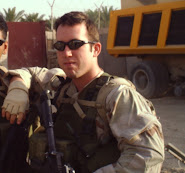










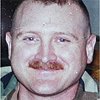


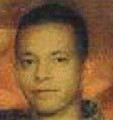
















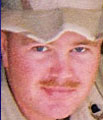
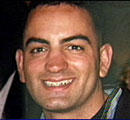





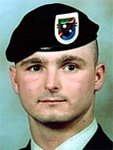


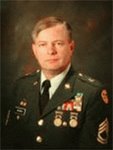

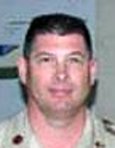
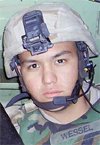
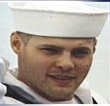
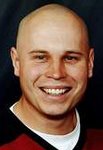
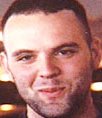
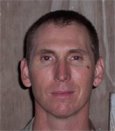


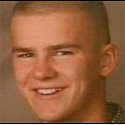
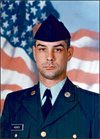


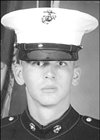
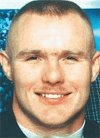
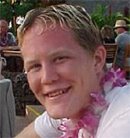

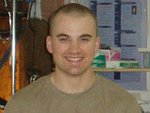

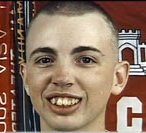


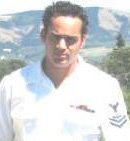

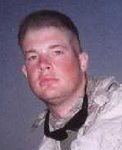
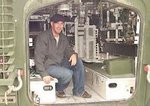


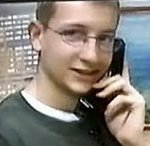

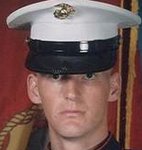
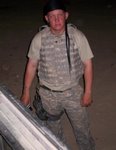
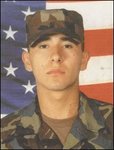


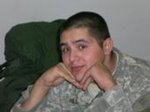
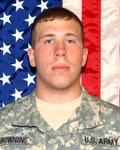





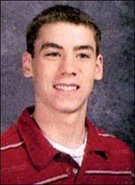
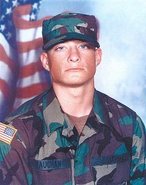
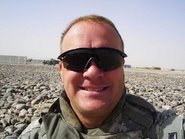
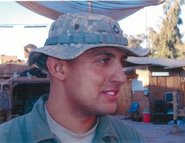
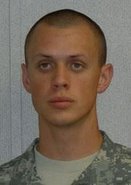
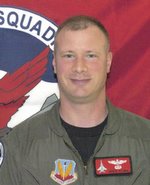
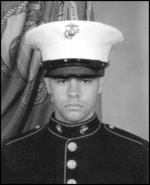
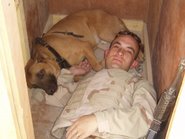
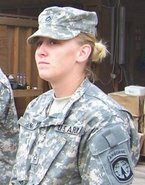

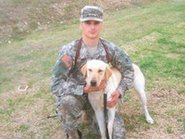

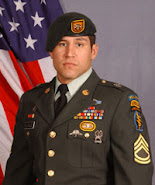

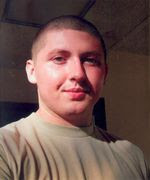



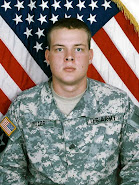
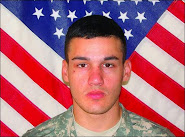



4 comments:
Thank God for these guys and the job they do, great job with this blog..
FYI, I have a new post up the links back to you, feel free to pick up any or all to get the word out.
Charlie
Thank you so much, Charlie!
The photo with that kid in the Kevlar is absolutely priceless.
Post a Comment